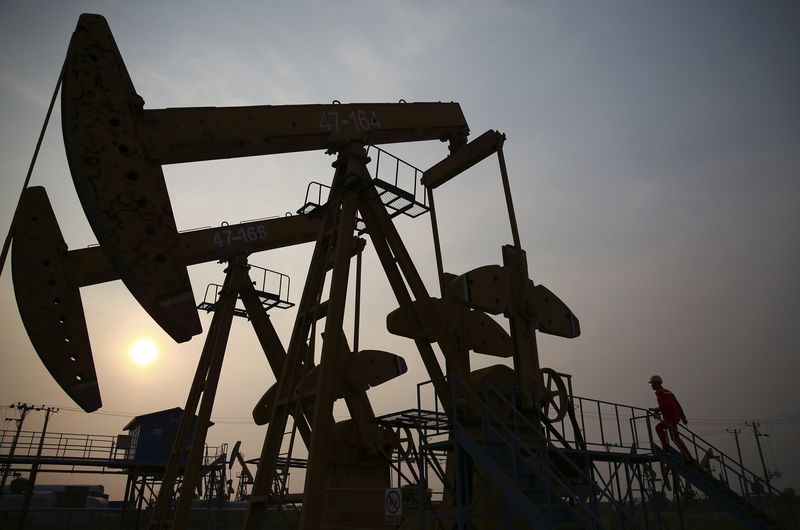By Sonali Paul
MELBOURNE, Oct 6 (Reuters) - Oil prices edged higher in early trade on Tuesday after U.S. President Donald Trump returned to the White House from hospital after being admitted for treatment for COVID-19 last Friday, while another storm brewed in the U.S. Gulf of Mexico.
Prices fell sharply last Friday when Trump went into hospital, then climbed more than 5% on Monday after he said he would return to the White House and as hopes grew that a deal could be agreed for a U.S. economic stimulus package to counter the impact of the coronavirus pandemic.
U.S. West Texas Intermediate (WTI) crude CLc1 futures rose 2 cents to $39.24 a barrel at 0134 GMT.
Brent crude LCOc1 futures rose 8 cents, or 0.2%, to $41.37 a barrel.
An expanding strike by workers in Norway, which shut six offshore oil and gas fields, and the evacuation of oil platforms in the U.S. Gulf of Mexico ahead of Tropical Storm Delta heading toward Louisiana and Florida also helped support prices. the supply-side factors that have changed in the last 24 hours and are contributing more to the uplift," said Lachlan Shaw, head of commodity research at National Australia Bank.
The Norway strike will cut the country's total output capacity by just over 330,000 barrels of oil equivalent per day, or about 8% of total production, according to the Norwegian Oil and Gas Association.
Meanwhile hopes for a bipartisan U.S. economic relief package grew as House Speaker Nancy Pelosi and Treasury Secretary Steven Mnuchin spoke on Monday and prepared to talk again Tuesday, continuing a recent flurry of activity working towards a deal on legislation. better (fuel) demand sentiment surrounding the potential for U.S. fiscal agreement, and perhaps President Trump leaving hospital might drive a bit of impetus to conclude a deal there," Shaw said.
Data from the American Petroleum Institute on Tuesday and the U.S. government on Wednesday will provide a picture of whether demand is picking up.
Five analysts polled by Reuters estimate, on average, that crude stocks rose by 400,000 barrels in the week to Oct. 2, while gasoline inventories likely fell by 900,000 barrels and distillate stockpiles, which include diesel and heating oil, likely dropped by 1.4 million barrels.
